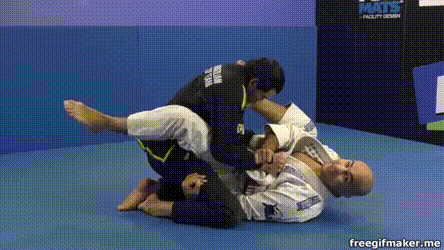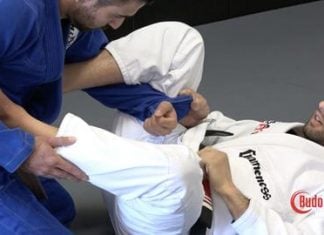
Omoplata is a very powerful and versatile technique if you know how to execute it and use it as submission and a sweep. Brazilian Jiu-Jitsu teaches us how to solve problems through the application of previously gained knowledge. True knowledge is not reflected by the number of facts we know, but rather by the way we manage to string them together. This statement applies perfectly to BJJ. As long as we know how to connect different positions and moves, we can build an adaptable game. Despite having an endless maze of techniques and concepts, Jiu-Jitsu has but a few techniques that transcend technical categories. One such diverse technique is the Omoplata.
The Omoplata is a technique that pretty much embodies the idea of constant threats during fluid movement. It’s much more than just a shoulder lock (which is what the term ‘Omaplata’ means in Portuguese). It has the ability to work as a submission, a sweep, or a transition towards other positions or submissions. It is a complete system placed in a single technique. As such, it is an invaluable tool in any grappler’s toolbox.
Origins of the Omoplata
Although now famous as one of the very basic BJJ techniques, it has far deeper roots. Originally, it was known as Ashi Sankaku Garami (meaning triangle entanglement) among the judokas of Japan. In Judo, this grappling technique was a follow-up move when a judoka failed a Tomoe Nage throw. It can also be traced back to Catch Wrestling whose practitioners referred to the technique as The Coil Lock.
Originally, it was shunned by the pioneers of BJJ in favor of “simpler” techniques like chokes and straight armlocks. This techniques’ popularity in Brazilian Jiu-Jitsu is mostly due to the efforts of Nino Schembri during the 1990s. A proponent of an unorthodox guard game, Schembri had great success in competition with it. It has, also, become a staple of many successful competitors like Clark Gracie, Ryan Hall, Zack Maxwell, etc.
Omoplata Attacks and Finishing Principle
In essence, just as its name suggests it’s first and foremost, a shoulder lock. It has a similar principle to other bent arm shoulder locks like the Kimura and Americana, apart from one distinctive difference. This technique uses the legs to form a tight entanglement, as opposed to the arms in other such locks. Despite immense shoulder pressure, this technique attacks the elbow joint as well.
As a submission, the Omoplata is notoriously hard to defend against due to the many possible variations. The most basic way to finish is by forcing the opponent’s arm into a chicken wing position with your legs.

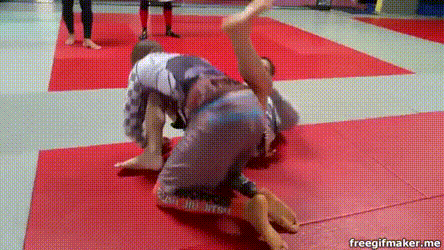
Key Points For Finishing The Omoplata Every Time
So what is the principle behind this diverse position? Well, first of all, it’s the fact that you can reach it from a variety of different positions. The closed guard is the most basic route, but it is also accessible from half guard, open guard, rubber guard, etc.
With the Omoplata, it is all about the hips. Basically, the hips offer both an anchor point for control as well as a power source for sweeping, finishing, or transitioning. In terms of structure, the legs need to be triangled with the knees pinched tightly together. This configuration brings about the best control of the position. You can improve control by implementing correct grips, especially on the closer leg, which prevents rollovers.
To break the opponent’s posture, though, you’ll have to straighten your legs. This is where hip pressure and timing come into play. To obtain the optimal position for a lock, the opponent needs to be flat out on their belly. The straightening of the legs results in the formation of a strong lever that leads the opponent into the desired position. From there, it’s smooth sailing to the finish.
The Omoplata is a highly effective position that will improve your game in many aspects. Whether you’re looking for a submission, a way to top position, or just tight control, the Omoplata is the way to go. Although you might never look as good as Clark Gracie while doing it or like Bernardo Faria when he submitted everyone on seminar only with Omoplata, you’ll undoubtedly be effective.
Crucial Principles To Focus On When Applying Omoplata
So, now that it’s clear that the Omoplata can double as a sweep, holding position, and a transitional checkpoint, let’s look at some basic principles. There are a few key elements to getting the submission without much effort. It can be a very high percentage technique, as Bernardo Faria has demonstrated on multiple occasions. Getting it is simple if you adhere to the following 6 principles.
- Do Not Let Your Opponent Roll Out. The first thing your opponent will do is to try to roll out. That’s something you will stop by controlling him. The old way of controlling the opponent is that you immediately hold him with your arm closer to him around his waist. Actually, this is not working. Your opponent will still be able to roll out. If you want to control him over the waist do it with your other farther arm. You’ll notice that you’ll have much more control and he won’t be able to roll out.
The other way is to hold his belt with your farther arm and control his leg with your closer arm. - Do Not Let Your Opponent Jump Over You.
Click For Full Technique Video Your opponent will either try to roll out or jump over you and end up in your side control. So, you should watch it. You will be aware of that and you will be ready to catch his first leg when he tries to jump over you. When you catch his leg without letting both of his legs touch the ground you have an easy sweep. But, even if your opponent jumps over you there is still a high chance of you retaining control. Bernardo Faria covered that part in his “Omoplata Everyone Instructional” and it works great
- Stay In Control And Grab The Armpit. Until that point, you will do anything you can to just stay there making sure his arm doesn’t pop out or he doesn’t roll out or jump over you.
- Don’t Try To Finish Until Your Opponent Is Completely Flat. Yes, it’s possible to finish this move when your opponent is in a turtle position but there are also high chances he’ll roll you over or lift you or a lot of other stuff. Once he’s flat on the mat you have an easy job finishing it.
- Be Patient. Sometimes it’s pretty hard to flat out your opponent, maintain the control or get the submission, but being patient is the key. If you have full control of your opponent’s arm and good control of his body the chances are he’s not going anywhere. He will resist as much as he can, he will try this and that but just staying there patiently will get you more submissions and sweeps than anything else.
- Think About Omoplata As A Submission And A Sweep.
Your main focus should be on submitting your opponents and you should believe in it. It’s pretty possible to finish anyone with it. But, if you don’t get the finisher the sweep is always there. So if you’re having problems controlling your opponent don’t force yourself to finish your opponent. Accept the sweep and move on. Sweep is actually a super high reward because forcing yourself further into submitting can easily lead to loss of control.
How to Finish Your Opponent When Your Farther Leg is Stuck
Often, you’ll try to go for Omoplata but your opponent will trap your “second” leg. Once your leg passed the shoulder and your opponents’ neck, you have many options, but to finish Omoplata you need to pull out your other leg, and sometimes it’s “mission impossible”. Once you go for the Pmoplata Your opponent already knows what you’re trying to do so he’ll do everything to keep your other leg trapped underneath him making it impossible to pull it out and finish your submission. Luckily for you, there is one option that works perfectly. It’s called MONOPLATA!
Once you passed your main leg over your opponent’s shoulder and your other leg is stuck you just have to turn your body keeping his arm tight so when you turn your opponent turns with you. Once you’re in the position that keeps your opponent’s arm bent in the shoulder lock position just take your knee and pull it. Make sure you pinch your knees together while doing so.
Here is a video of that technique and I must say that it works awesome. There are no many counters or escapes to this submission except trying to move your top leg and it should really become your bread and butter technique against anyone who’s going to “lay and pray” on your farther leg.
Chapter 2:
Easy Omoplata Sweep Submission Follow-Ups
There’s something about catching those “classic” Brazilian Jiu-JItsu submissions. Those are the moves that gave BJJ its name, and the fact they still work today is simply amazing. However, very often these moves can either go wrong, putting us in defense mode, or they simply do not work. While giving up on submission and restarting is a legitimate strategy, a much better one is connecting other attacks to it. The thing about all the “classics” is that they’ve been around for so long, the people have numerous follow-up options to keep their attacks going. One such move that grapplers often turn to is the Omoplata. This “basic” shoulder lock is so much more than just a one-dimensional finishing move. Turning to the Omoplata sweep when you’re initial submission is stuck is a surefire way to keep going and finish, maybe even with the Omoplata itself!
Back in my early blue belt days, I was a huge fan of omoplatas. I discovered that the Omoplata works great when you combine it with an armbar and a triangle. Since closed guard was my favorite position (big surprise there) this combo soon became my favorite. This meant that people knew what to expect, and higher ranked belts, in particular, defended my attacks fairly easily. This led me to the Omoplata sweep as the natural extension. At the time, just getting the sweep was immense for me. However, it soon became apparent that I had no direct threatening options after sweeping. And I didn’t like it at all.
The one big problem people usually run into with the Omoplata sweep is exactly this. The sweep lands you in a perfect position to continue attacking. Yet, most people settle for untangling their legs and going straight into side control. While this is a positionally sound strategy, going on the offensive from there is going to take a lot of work. While certain follow-ups may come naturally to some people, usually it takes someone to unlock these paths for you. Today, our goal is to show you the next level of attacking with the Omoplata.
The Omoplata Submission
The Omoplata is one of those cool-looking submissions specific to Brazilain Jiu-JItsu. It is a shoulder lock that is done from the bottom, usually from the closed guard. While closed guard setups are the most basic, there are also plenty of open guard setups, most notably from the Spider guard. The cool thing about the Omoplata is that it is a submission in which your legs do all the work.

To finish, you’ll need to lay your opponent flat on the mats. This requires you to extend your legs forcefully so that their upper body goes to the floor. A few butts scoot to the side is all it takes to make their hips follow. Once the opponent is flat on the ground, you lean towards the opposite side shoulder, placing immense pressure on their trapped shoulder because of your legs.
The Omoplata Sweep
Gettin the Omoplata sweep is actually very easy. In most cases, people are going to give it to you themselves. If you do not control the opponent’s feet or belt when you first get into Omoplata position, they can roll out. While they can roll out of the submission itself, they do not necessarily leave the position, if you know how to follow up. Another great option is finishing the sweep itself.
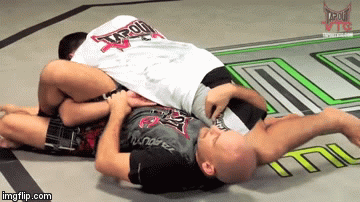
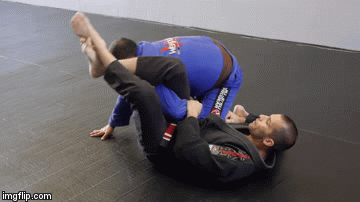
The Follow-Ups
This is where the fun begins. Abandoning the arm configuration and simply going for side control is also a very legitimate strategy. However, going for a finish and much better positions is a better one.
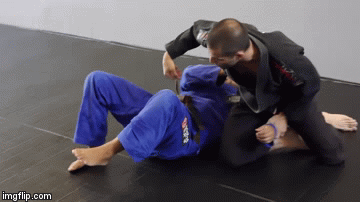

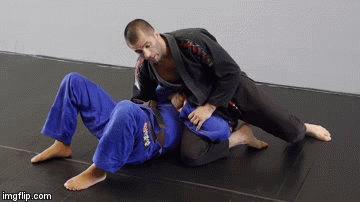
My Opinion on Omoplata and How Interesting and Effective It Is
I would like to add one thing here that I think is important for you to understand how seriously effective Omoplata is. If I have to do only one position or submission for the rest of my life that would definitely be Omoplata. And why is that so? Well, it’s a very interesting technique with so many options that I can freely say that it’s the technique you can never get bored with. So, in my opinion, it’s a BJJ technique that you should really focus on and have fun with it. You won’t get bored with it, I promise.

Bernardo Faria is a true virtuoso with the Omoplata. After numerous successful match victories via this shoulder lock, Faria revealed all his secrets. His “Omoplata Everyone” DVD set is available at a cut-price. What do you mean you still do not have it?
Related Articles:
REVIEW: Omoplata Everyone – Bernardo Faria
Gogoplata Details and Mechanics
Kimura Lock Details To Control And Submit Anyone
The Nastiest Armlock Submission in BJJ – The Squirrel Lock
Wrist Locks BJJ – Sneaky Submissions That Nobody Can Defend
Bernardo Faria Challenged Himself To do the only Omoplata on Seminar.










